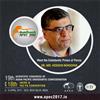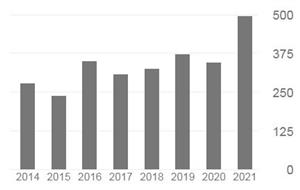Microstructure and Chemical Analysis of Blood‐Contaminated Mineral Trioxide Aggregate
Aim: To test the hypothesis that blood contamination has a detrimental effect on the chemical properties of Mineral trioxide aggregate (MTA). Methodology The effects ofwhole, freshhuman blood on the microstructure and elemental chemistry of MTA were evaluated using scanning electron microscopy and energy-dispersive X-ray analysis, respectively. The phase compositions of contaminated and uncontaminatedMTA were also analysed using X-ray diffraction analysis.
Results: The hydration state of specimens partially mixed with blood were more complete than those mixed entirely with blood and less than those entirely mixed with water. Acicular crystals, characteristic of ettringite, were abundant in specimens mixed entirely with water and absent from specimens mixed partially or entirely with blood. Calcium hydroxide crystals were absent in specimens contaminated entirely with blood and the unhydrated MTA powder, but present in the other groups.
Conclusion: Mixing MTA with blood resulted in the lack of formation of the crystalline calcium hydroxide in the early stage of the hydration process.














